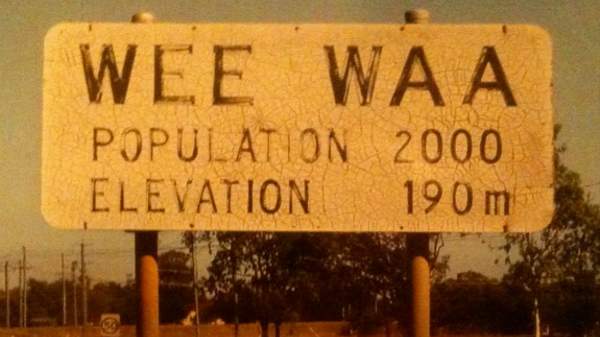Overview
We were about two hours out of Sydney when the stars started to come out, getting brighter and brighter as we hurtled down the highway, leaving the city and all its pollution behind. It was late, and I was tired, trying desperately to squeeze in a quick nap before it was my turn to drive. And as I turned my head to rest on the seatbelt, my eyes flicked upwards, and caught sight of a shooting star, blazing its way through the middle of the Southern Cross.
The Wee Waa Agricultural Show, now in its 79th year, is like Sydney's Easter Show for an audience of a couple of thousand instead of a couple of million. It is a celebration of the local community, acknowledging the wonderful things accomplished by the townspeople, from the produce to the livestock, from homemade jams, soaps and cakes to handmade floral arrangements, quilts and much, much more.
For a number of reasons the album launch itself was not what it could have been, not least the fact that Sony had made the album available to stream online three days beforehand, gazumping Wee Waa’s premiere. Estimates from the night suggest that perhaps as many as half the anticipated 4500-strong crowd simply didn't bother to show up, and weeks of feverish speculation meant that whatever was planned for the night wasn't going to satisfy, except perhaps if Thomas Bangalter and Guy-Manuel de Homem-Christo rode in to the Show on a Blue Ribbon heifer.
But the main reason the launch was a bit low-key is that Random Access Memories is the least Daft Punk record yet released. It's an homage to the 1970s, with disco and soft rock the dominant moods, almost the polar opposite of the groundbreaking, apocalyptic, electronic crunch of Discovery. And although the lead single, 'Get Lucky', is as chilled and danceable a groove as you could hope for, there really aren't that many opportunities for getting your boogie on. And those of us who thought that the recent resurgence of electronic music — led by unashamed, brutally heavy party tracks from the likes of Skrillex, Nero and Avicii — would lead Daft Punk to double-down on their trademark sound were sorely disappointed, a fact made clear by the roars that greeted the classic Daft Punk tracks a DJ played after the album to make the moment last longer.
But as we left the largest outdoor dancefloor in the world, underlit by thousands of LED lights, and went our separate ways, no one really had any complaints. And judging from the expressions on the faces of the crowd, everyone realised that they had just been part of something unique, and something that they were never likely to experience again.
When it was first announced that Daft Punk would be launching their first album in eight years at the Wee Waa Agricultural Show, the resulting explosion of incredulity reached all corners of the internet. After the incredulity came the second-guessing, millions trying to figure out why Wee Waa was chosen over so many other places. All of this had at its heart the same premise: that choosing to hold this event in Wee Waa was inexplicable, and that somewhere, surely, there was an explanation that would make sense.
But whether Bangalter, de Homem-Christo, Sony or any of the complainers realise it or not, Wee Waa couldn't have been a more perfect choice. This town is the beating heart of a huge industry — the Australian cotton industry, worth some $2.5 billion annually — producing a product that is exported all over the world. It's a town that is aggressively innovative in its field (and fields), with tremendous advances being made in how much cotton can be grown with limited amounts of water, as well investing heavily in the research and development of natural pesticides that have little to no impact on crops or on consumers. And it's a town, like so many country towns across Australia, where strangers are welcomed with open arms, open hearts and open minds. If Daft Punk can’t see themselves — global superstars of dance music, with their history of audiovisual innovation — reflected in the town and its people, then they clearly lack the imagination we've always ascribed to them.
Wee Waa is a wonderful, beautiful, uniquely Australian place, with a strong connection to the land, to the water, and — thanks to the Australia Telescope Compact Array in Narrabri — to the skies. And despite some disappointment caused largely by unrealistic expectations (and a less-than-amazing album), this was a wonderful, beautiful event, a once-in-a-lifetime experience that will always be special for how fleeting it was. Much like a shooting star in the country sky, blazing its way through the middle of the Southern Cross.
